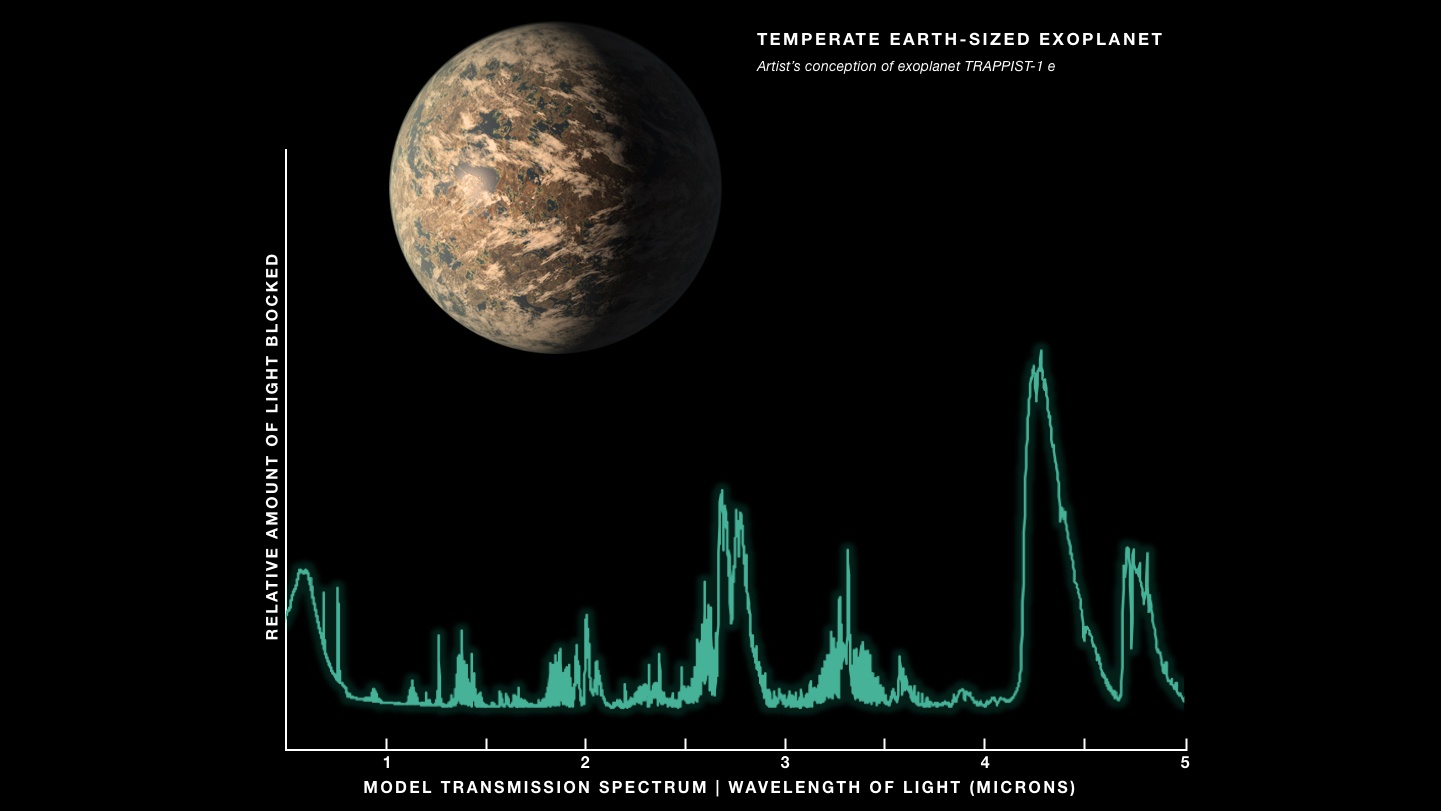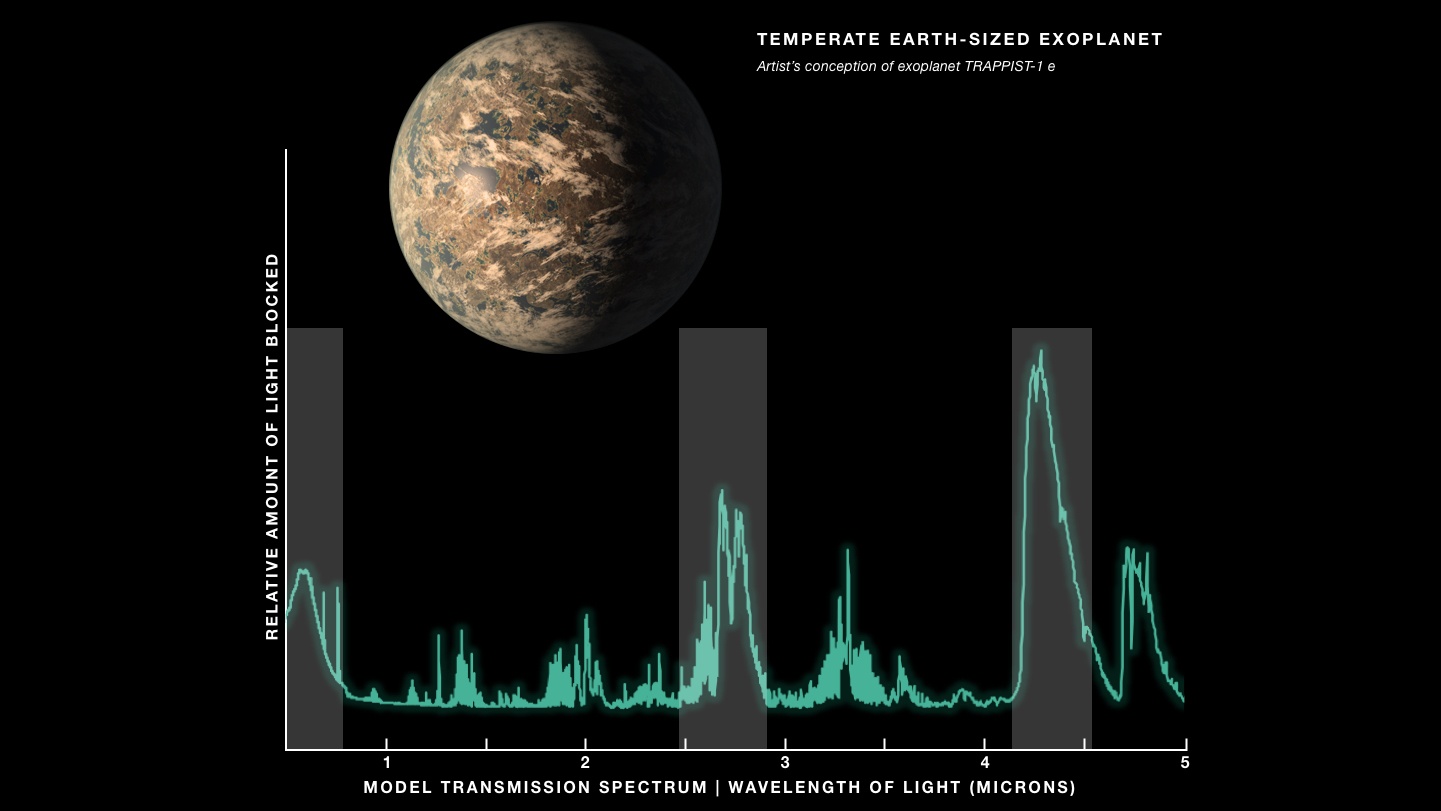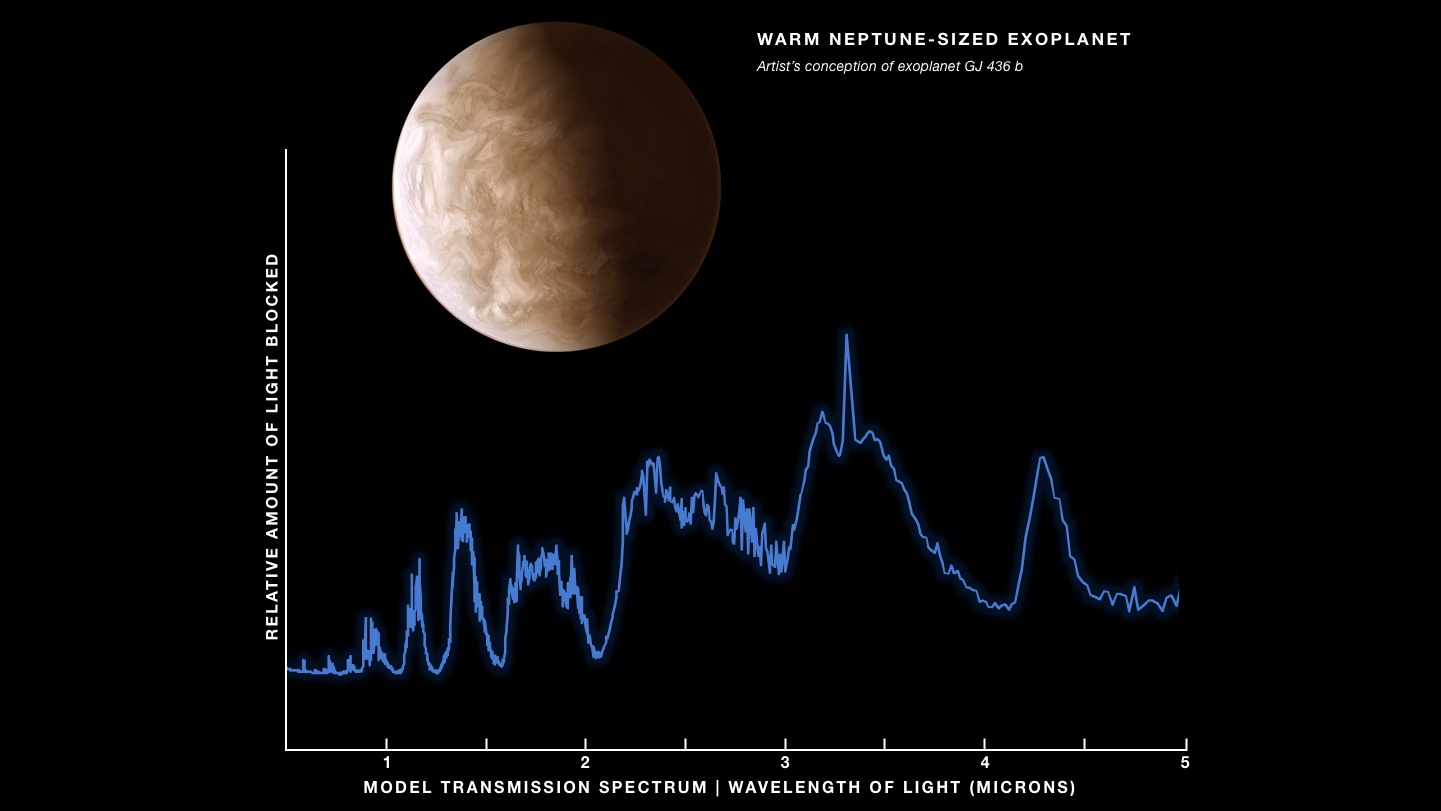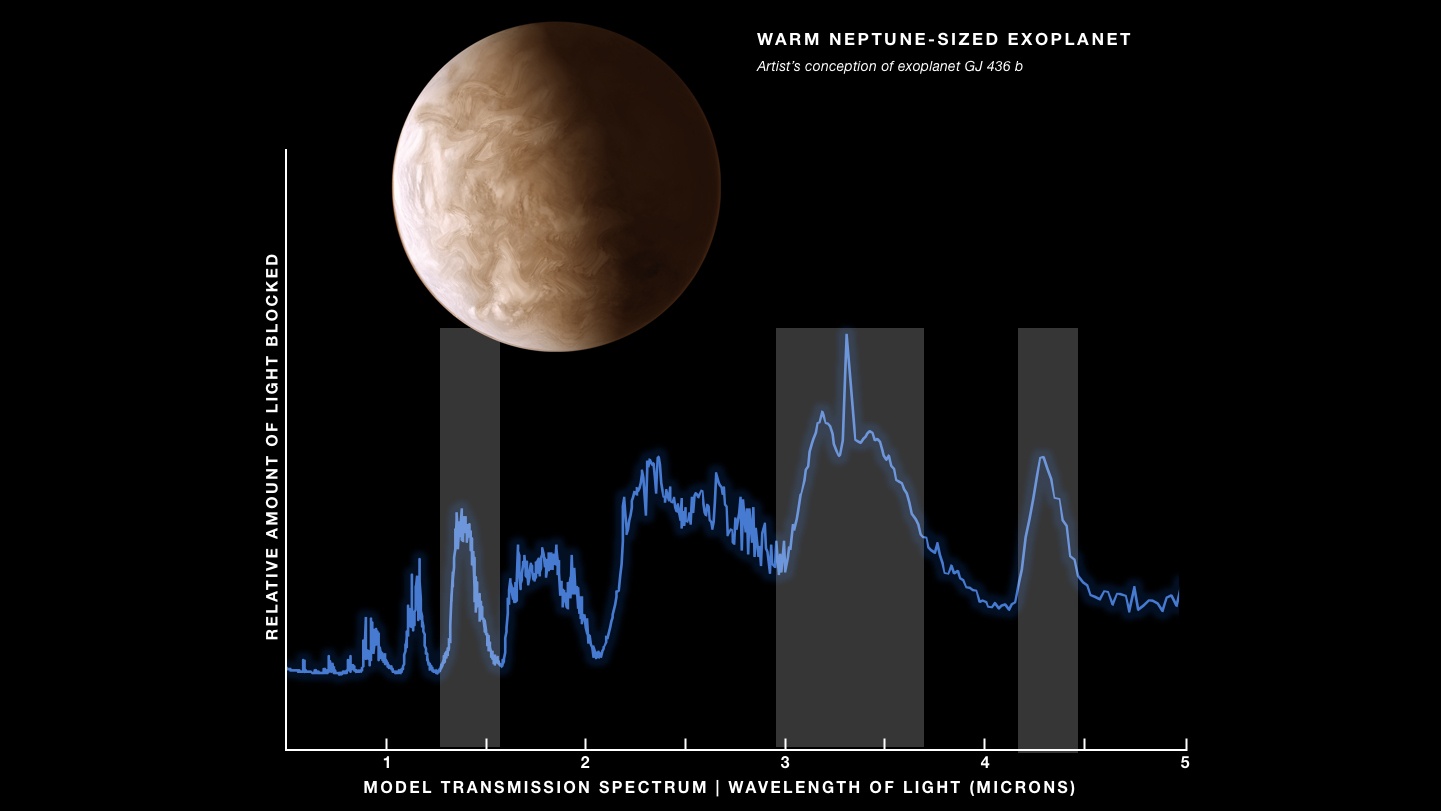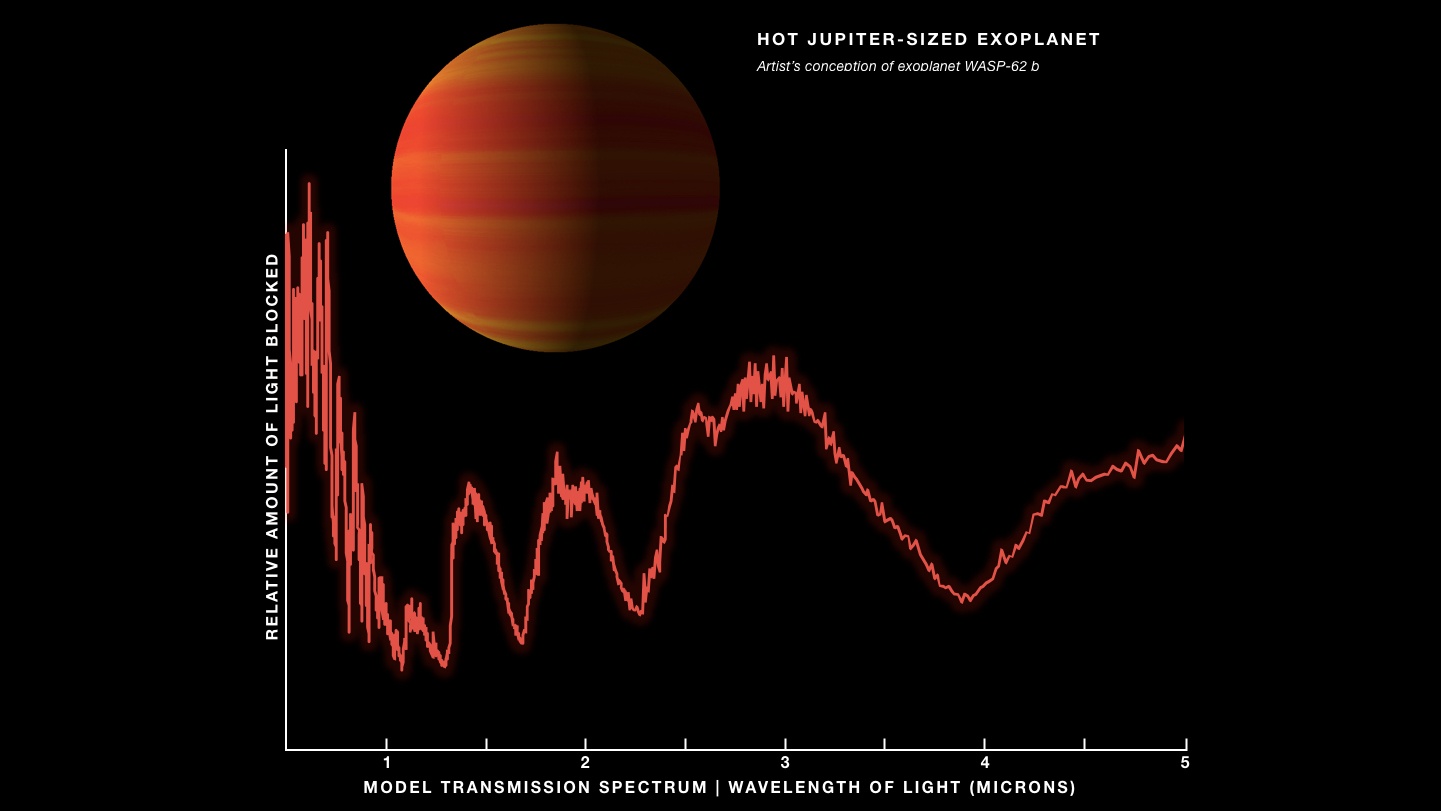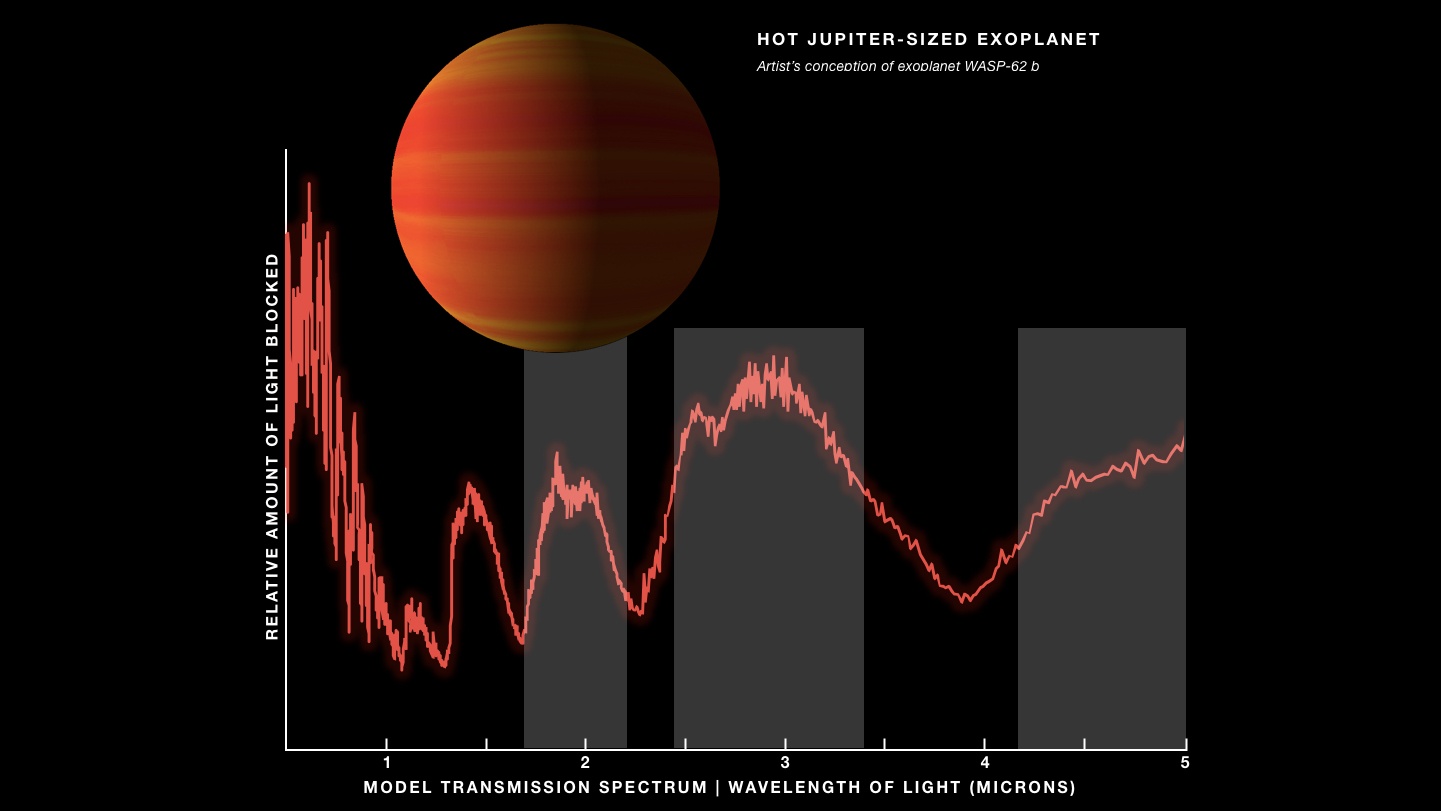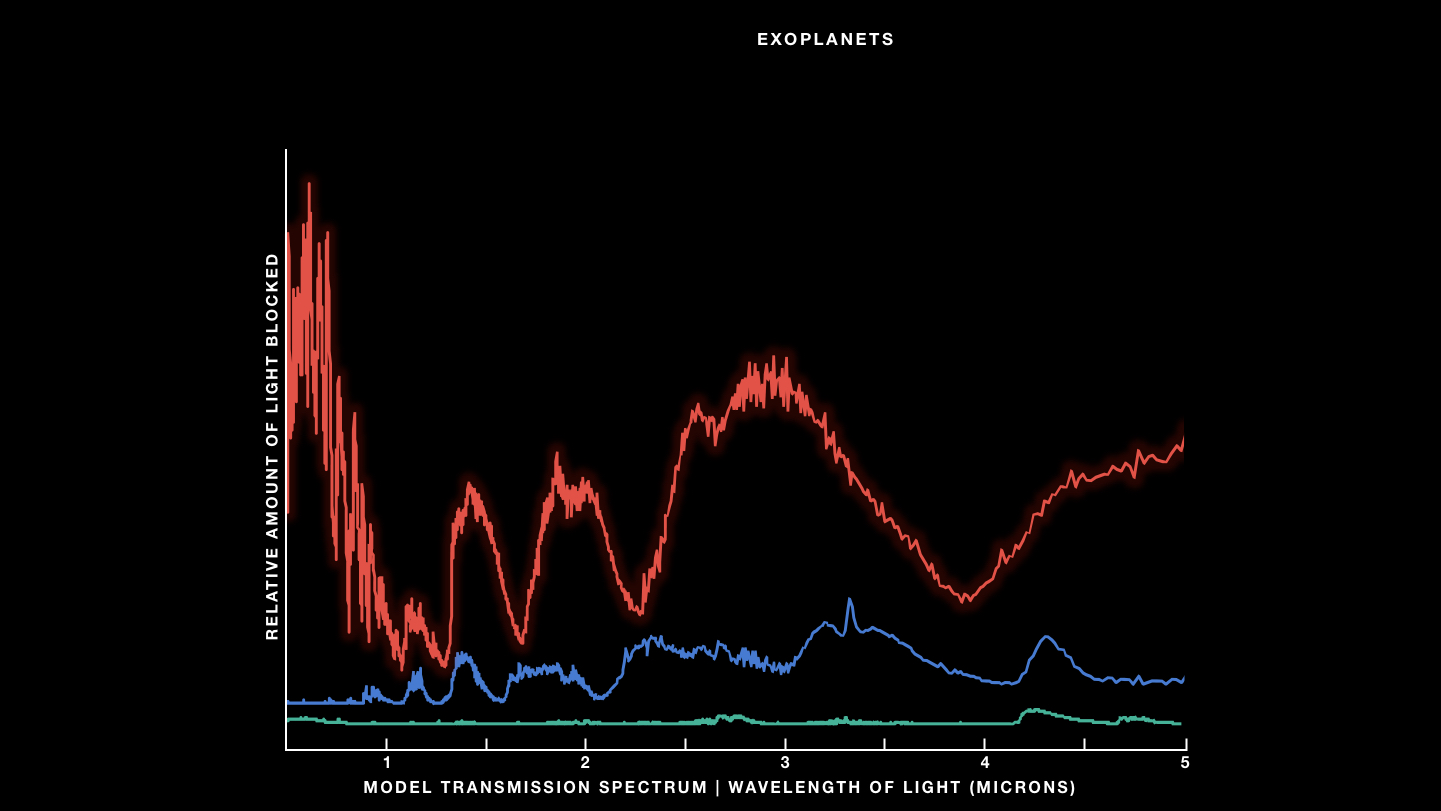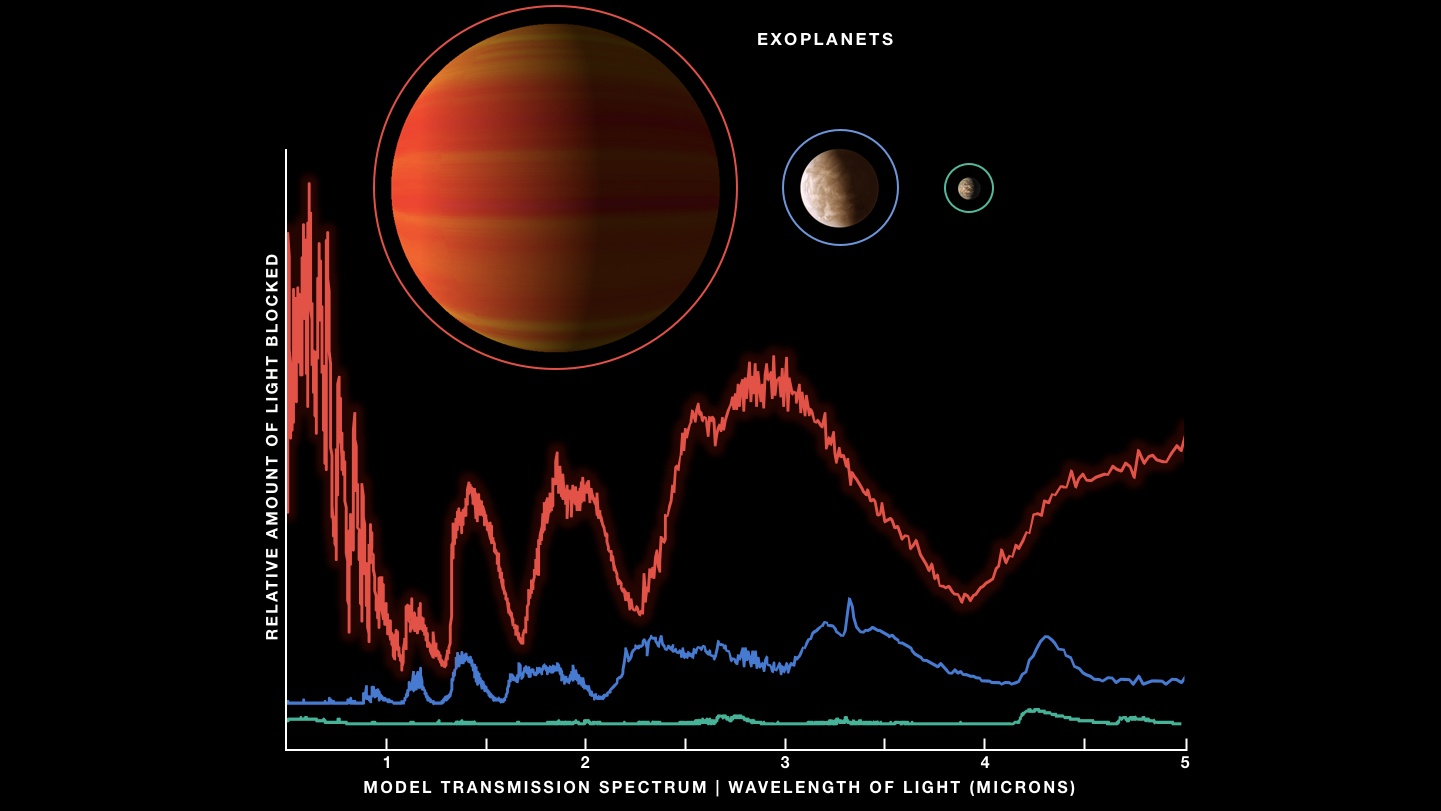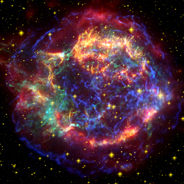Interactive Overview
Slider Interactive: A series of graphics showing different types of exoplanets with graphs showing what their transmission spectra could look like. Below the caption is a horizontal slider bar with four labeled stops and a solid white circle. Dragging the white circle right and left along the slider bar causes the image, labels, and caption to change. The change occurs gradually as one image, along with its associated captions and labels, fades out and the next fades in. A toggle button to the upper right of the image turns the image labels off and on. Labels are in the form of text and highlighting with arrows pointing to specific features in the image.
Slider Stops
From left to right, the slider stops are labeled: Temperate Earth-sized, Warm Neptune-sized, Hot Jupiter-sized, and Comparison.
Summary of Slider Stops
Sliding left to right reveals the following:
- “Temperate Earth-sized” stop shows an artist concept of an Earth-sized exoplanet and a model transmission spectrum. This is the initial image shown when the interactive is loaded.
- “Warm Neptune-sized” stop shows an artist concept of a Neptune-sized exoplanet and a model transmission spectrum.
- “Hot Jupiter-sized” stop shows an artist concept of a Jupiter-sized exoplanet and a model transmission spectrum.
- “Comparison” stop shows a comparison of the three model transmission spectra.
Stop 1: Temperate Earth-sized
Image Description: Temperate Earth-sized
An artist concept of an exoplanet is in the top left. The planet appears to have brown landforms, blue water, and white clouds. Part of the planet is lit and part is in darkness. Text to the right of the planet reads “Temperate Earth-sized Exoplanet. Artist’s concept of exoplanet TRAPPIST-1 e.”
Below the exoplanet illustration is a line graph of “relative amount of light blocked” on the vertical y-axis versus “model transmission spectrum | wavelength of light (microns)” on the horizontal x-axis. There are no units or tic marks on the y-axis. The x-axis ranges from less than 1 on the left to 5 microns on the right, labeled in even increments of 1 micron.
The spectrum is plotted as a jagged green line. The overall shape of the spectrum is relatively flat with numerous peaks of different height and width. Prominent, wide peaks are apparent around 0.6, 1.4, 2, 2.75, 3.3, 4.25, and 4.8 microns.
Labels: Temperate Earth-sized
Three labeled light-gray bars highlight three prominent peaks along the exoplanet’s spectrum. From left to right: The first peak at around 0.5 microns is labeled “Oxygen O2 and O3.” The second peak, ranging from 2.5 to 2.9 microns, is labeled “Water H2O.” The third peak, which ranges from about 4.1 to 4.5 microns, is labeled “Carbon dioxide C O2.”
Caption: Temperate Earth-sized
An Earth-sized planet like TRAPPIST-1 e could have an atmosphere similar to Earth’s.
Stop 2: Warm Neptune-sized
Image Description: Warm Neptune-sized
This graphic has the same layout as Stop 1, with an exoplanet at the top left and a graph showing the transmission spectrum below it. The planet appears to be shrouded in swirling light brown and white clouds, with no surface features visible. Part of the planet is lit and part is in darkness. Text to the right of the planet reads “Warm Neptune-sized Exoplanet. Artist’s concept of exoplanet GJ 436 b.”
The line graph below the illustration has the same axes as in Stop 1, with “relative amount of light blocked” on the y-axis versus “model transmission spectrum | wavelength of light (microns)” on the x-axis. As in Stop 1, there are no units or tic marks on the y-axis and the x-axis ranges from less than 1 on the left to 5 microns on the right, labeled in even increments of 1 micron.
The spectrum is plotted in blue. As in Stop 1, the line is jagged, with numerous peaks and valleys of different height and width, but the locations and shapes of the peaks are different. The peaks are much wider than those in the first stop, and the spectrum slopes upward to the right. Prominent peaks are apparent around 0.9, 1.15, 1.4, 1.75, 2.25, 3.3, and 4.3 microns.
Labels: Warm Neptune-sized
Three labeled light-gray bars highlight three prominent peaks along the exoplanet’s spectrum. From left to right: a peak between 1.25 and 1.6 microns is labeled “Water H2O.” The tallest peak, between about 3 and 3.7 microns, is labeled “Methane C H4.” The last distinct bump between about 4.2 and 4.5 microns is labeled “Carbon dioxide C O2.”
Caption: Warm Neptune-sized
Some warm Neptune-sized planets like GJ 436 b are thought to be rich in methane.
Stop 3: Hot Jupiter-sized
Image Description: Hot Jupiter-sized
This graphic has the same layout as Stops 1 and 2, with an exoplanet at the top left and a graph showing the transmission spectrum below it.
The planet has horizontal banding of red and orange. Part of the planet is lit and part is in darkness. Text to the right of the planet reads “Hot Jupiter-sized exoplanet. Artist’s concept of exoplanet WASP-62 b.”
The line graph below the illustration has the same axes as Stops 1 and 2, with “relative amount of light blocked” on the y-axis versus “model transmission spectrum | wavelength of light (microns)” on the x-axis. There are no units or tic marks on the y-axis and the x-axis ranges from less than 1 on the left to 5 microns on the right, labeled in even increments of 1 micron.
The spectrum is plotted in red. As in Stops 1 and 2, the line is jagged, with numerous peaks and valleys of different height and width, but the locations and shapes of the peaks are different. The peaks are much wider than those in Stops 1 and 2, and the spectrum slopes upward to the right. Prominent peaks are apparent around 0.5, 1.2, 1.4, 1.9, and 2.75 microns, with a broad hill from about 4 microns to the right edge of the graph at 5 microns.
Labels: Hot Jupiter-sized
Three labeled light-gray bars highlight three prominent peaks along the exoplanet’s spectrum. From left to right: a peak ranging from 1.7 to 2.2 microns is labeled “Water H2O.” A broad peak from 2.5 to 3.5 microns is labeled “Water H2O and Carbon monoxide C O.” The gradual rising slope that starts at 4 microns and continues until the end of the graph is labeled “Carbon dioxide C O2.”
Caption: Hot Jupiter-sized
Water can even exist on hot gas giants like WASP-62 b, which are inhospitable to life as we know it.
Stop 4: Comparison
Image Description: Comparison
The graphic has a similar layout to Stops 1, 2, and 3, but with all three exoplanet artist’s concepts and model transmission spectra in one view. The exoplanets are lined up from largest to smallest. Each planet has a colored circle around it that corresponds to the color of the spectrum in the graph. From left to right: Hot Jupiter-sized circled in red, Warm Neptune-sized circled in blue, and Temperate Earth-sized circled in green. Text above reads “Exoplanets.”
The three spectra are plotted as lines on the same graph of “relative amount of light blocked” on the y-axis versus “model transmission spectrum | wavelength of light (microns)” on the x-axis. The labeling is the same as in Stops 1, 2, and 3.
The red line is exactly the same as in Stop 3 with many broad, high peaks. But the peaks in the blue and green lines are subtler than in Stops 2 and 1. The general pattern is the same, with the peaks located at the same wavelengths, but the peaks are much shorter in height, indicating that they are blocking less light. The three lines do not overlap. The red line is at the top (most amount of light blocked). The blue line is in the middle. The green line, which is flattest, is near the bottom (least amount of light blocked).
Labels: Comparison
Each of the three colored spectrum lines is labeled. From top to bottom, the dynamic rising and falling red line is labeled “Hot Jupiter.” The slightly bumpy blue line is labeled “Warm Neptune.” The nearly flat green line is labeled “Temperate Earth.”
Caption: Comparison
Thicker and denser atmospheres block more light.
